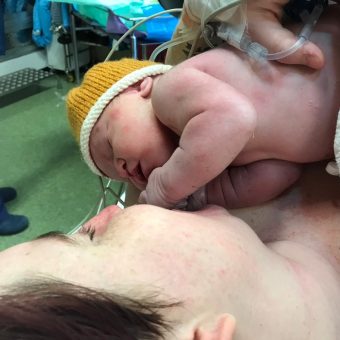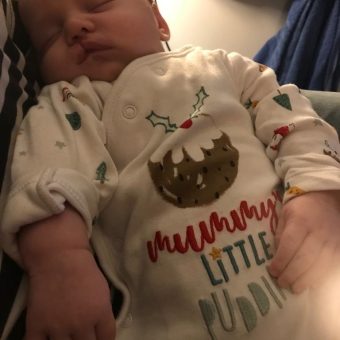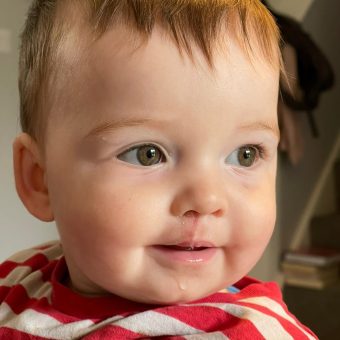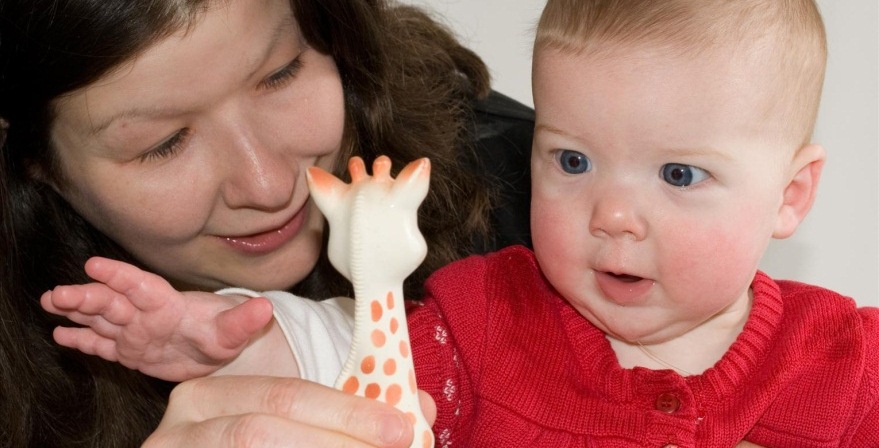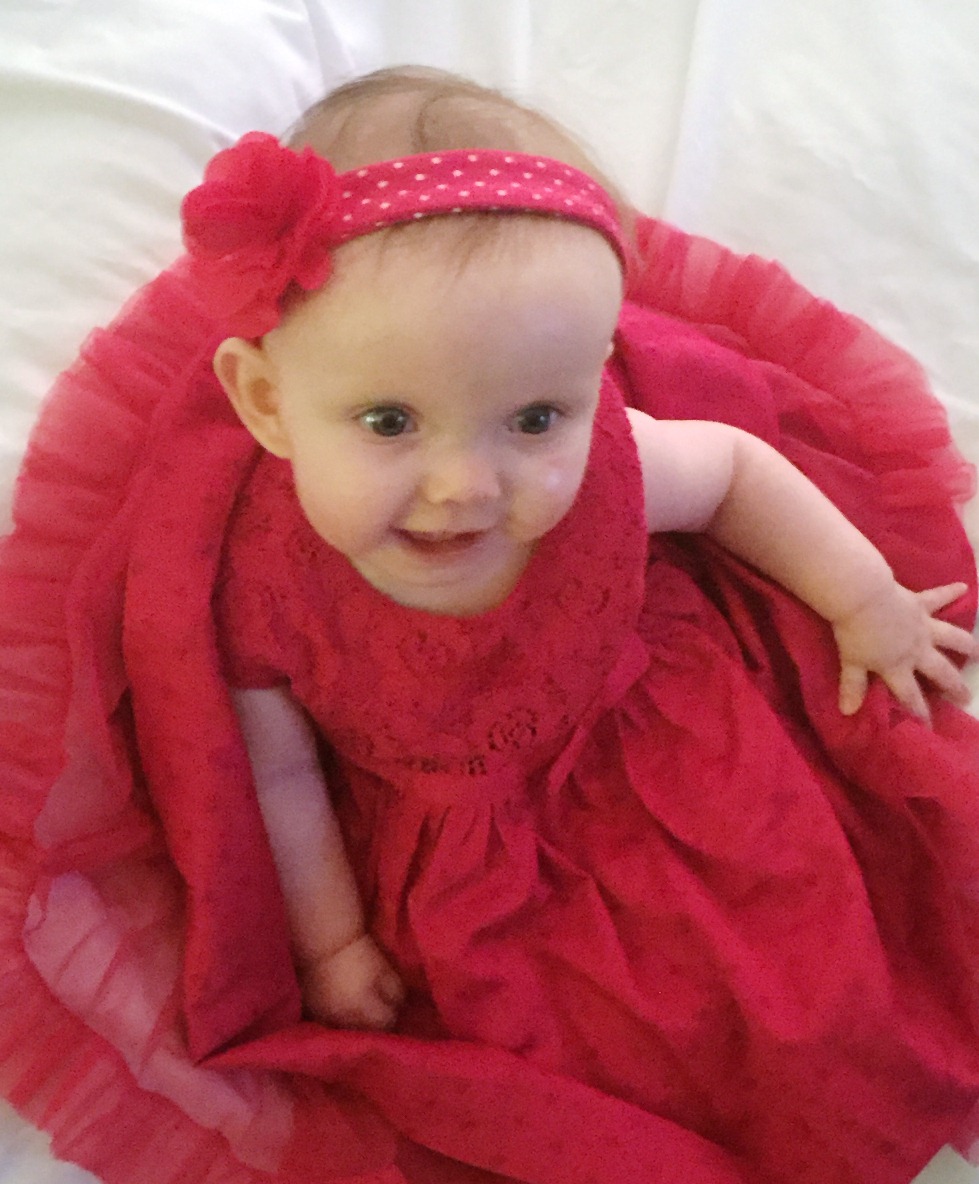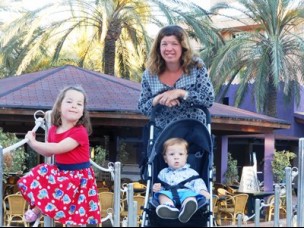
Rebecca’s Story
A guest blog from Rebecca providing cleft lip help and support from a parent’s perspective to help other parents.
Receiving a diagnosis pre and post-operation advice.
Today marks a year since my little boy, Charlie, had his cleft lip operation in Nottingham.
I have a blog solely dedicated to parenting and fibromyalgia, but I wanted to write a post today for families who have just received the news that their baby has a cleft lip.
I believe I can offer valuable insight into how to cope with the diagnosis, prepare for an operation, and my experience during and after the operation in the hope that I can make one family feel less afraid.
Receiving the diagnosis
My 20-week scan date came around, and we were incredibly excited as we desperately wanted to find out the gender of our baby. On the one hand, I always found scans such a lovely experience as I got to see my baby again and ask lots of questions, but on the other hand, it was also a frightening experience. Often, the sonographer is very quiet while scanning; although that’s so they can concentrate, I start worrying that something is wrong!
During the scan, we excitedly learned that we were elated and had a baby boy. However, the news was then dropped that our boy would be born with a cleft lip.
Of course, if I heard that now, I would know it is nothing to worry about and that everything will be fine. However, back in 2021, I was absolutely clueless about what this meant.
I can remember bursting into tears and being led to a side room to await further information. Immediately, I was on to ‘Doctor Google,’ and when I came across a completely incorrect article that said it might be something I did, the floodgates opened.
Quickly, though, I was reassured that this was not true in the slightest and was directed to CLAPA, who provided proper scientific information. Please do not Google until you have spoken to a professional about it.
Support after the diagnosis
When we got home, the Cleft nurse rang me to discuss the diagnosis further. She gave me a great piece of advice: to take some time to process the diagnosis properly, and if that meant taking some time away from work, then so be it.
My GP ended up doing this to help me process, and because my anxiety was already bad, he put me forward for some CBT counseling and gave me some safe medication to help my anxiety.
CLAPA also has a dedicated peer and parent support section where you can ask to speak to a parent support worker who has been in the same situation. I took full advantage of this free service and talked to a lovely lady in a very similar situation to my own, who helped me out immensely.
Scans after diagnosis
We did not have to wait very long at all for a further scan with Nottingham’s Foetal Medicine unit, which had a dedicated cleft team. The exciting and wonderful thing about this scan is that we got to see our baby in 4D to see what the cleft looked like. It was around the 24-week mark. We also returned at 28 weeks to see if we could see further changes.
I was told that if his palate were affected, it would be like Charlie sucking through a straw with a hole in it, and he would have to have special bottles and a longer operation.
The scans were a magical experience and really helped us realise what a cleft was and how little impact it would have on him. It was also a chance to discuss with our cleft team, meet our surgeon, and ask questions. Really take advantage of those meetings with the team to ask anything and everything you want! There are no stupid or silly questions!
Birth of your baby
There is no reason that your baby’s diagnosis of a cleft lip should affect your birth in any way. If anything, it means that a paediatric doctor should be available after delivery to ensure everything is ok. It was the happiest moment of my life when my son was born, and you did not even notice the lip at all. He was beautiful, amazing, special, and such a bundle of joy!
After a few moments, they checked his mouth for me to see if the palate was affected, but we were very lucky that it wasn’t. This meant he could breastfeed straight away, and the cleft lip did not stop this in the slightest.
For the birth, a piece of advice I can offer you is to make sure it is prominent on your notes that your baby has a cleft lip and make the team aware so you receive the right support. Furthermore, within 24 hours, you should have a visit from your cleft team to check the baby over, too.
After birth
Once you are home with your baby, the cleft lip disappears from your mind altogether! Like any other new mum and baby, you are in a glorious post-natal newborn stage. I suggest you join Facebook cleft groups so you have others who have a similar experience to your own. Otherwise, until your operation date, there is nothing further to worry about.
When out and about with my son, I never had any negative comments about my son’s cleft from anyone. It helped others speak to me and share their cleft lip or palate stories. It made you realise how common it was.
A really important piece of advice is to take so many pictures because, after the operation, you really will miss their cleft smile.
Leading up to the operation
In the run-up to the operation, you should be in regular contact with your cleft team in case of any issues, questions, or support you need.
Mine were invaluable in the lead-up to the operation. We were still coming out of the pandemic, and our operation date was unknown. Normally, we were told our operation should be done in the first 3-4 months, but unfortunately, due to COVID, ours wasn’t completed until he was nearly ten months old.
It didn’t matter because we still got to sample his beautiful, cleft smile for a little longer.
Furthermore, I purchased a cleft lip storybook to prepare myself and my little boy for the surgery. Then, I added my own words to the book. I wrote it as if I was talking to Charlie about his cleft and what would happen during the operation. I also thought it would be a lovely keepsake for him later in life.
Finally, in the lead-up, visit CLAPA’s page about treatment. I would advise avoiding reading about treatment antenatally, but in the run-up to the operation, it is a good idea to familiarise yourself with the treatment process.
Operation date
Getting the date for the operation can be scary, but then have a date to work with. It made me feel less anxious and able to prepare myself fully. I got back in touch with CLAPA’s peer and parent support team, so I had support from a parent who had been through the process already. I also posted on Facebook cleft lip groups asking for advice on what to take and expect.
Also, there is a service called Pyjama Fairies, a website that makes cute and easily accessible hospital gowns and pajamas for children who have to undergo surgery.
It is an amazing service, and we ordered a gown and pajamas for him just in case. They were beautifully made and were a small touch that helped us cope just that little bit better. Ensure you order in plenty of time so your garments arrive before surgery.
Hospital bag checklist for you:
- Eye mask for you in case you have to stay overnight. It will help you sleep with all the bright lights in the hospital.
- Headphones for when your child is in surgery. Ours took just under 3 hours, so I made sure I had calming meditations downloaded that I could listen to.
- A book again for either during the surgery or when your child naps.
- Snacks and comfort food
- Water – it gets super hot on the ward!
- Pjs and comfy clothing in case of an overnight stay
- Phone and phone charger
- Lip balm
Hospital bag checklist for baby:
- Socks
- Loose-fitting vests that you can easily get over baby’s head.
- Loose-fitting clothes that you can easily get over baby’s head.
- Nappies
- Wipes
- Toys and teddies to keep them occupied
- Books to read to them
- Something for them to go down to surgery in
- Something to get changed in after surgery
- soft snacks, milk, and water for afterward (as long as cleared)
- Sling or pushchair to comfort baby/transport
- Comforting blanket
- During the operation
The hardest part for me was walking away once they had put my little boy to sleep! I didn’t want to go; I didn’t want to leave him, and it was emotionally challenging.
However, the best advice I was given was to get off the ward so you aren’t clock-watching. We went to the café and had a drink and food to keep our strength up. Then we went to get my little boy a balloon for when he woke up. After that, I knew I needed to return to the ward and sit and wait. This is where my headphones came into use as I listened to lots of calming meditations until the surgeon came to get me.
After the operation
We were taken down to recovery after nearly three hours, and luckily, my boy was still fast asleep! Soon enough, he stirred and fed very quickly! Then, he sat up straight and wanted me to take him around the room to explore the pictures on the wall.
We then went back to the ward, and he was hungry for lunch and wolfed down with no problem. After that, we took him to the playroom, and he wanted to play. The doctor had to come and find us and said he was the fastest-recovered baby in the playroom! All that worry and stress, and honestly, he was absolutely fine.
I couldn’t see much difference in my boy’s lip for a while. I was told to focus on my baby’s eyes as these wouldn’t have changed. Eventually, we did start to notice a difference, but to me, he was still my beautiful little angel – cleft or no cleft! His lip healed quickly, and we were lucky we didn’t have to stay overnight. In the weeks after his operation, everyone commented that you couldn’t even tell he’d had anything done.
Beyond the operation
It is very easy for me to sit here and tell you not to worry when you receive a diagnosis because I am on the other side of it. Please trust me when I say our babies are more resilient than we give them credit for. Now, looking back at baby pictures, it is hard to remember the cleft at all. We are still part of cleft lip groups and go to organised events as it’s like being part of a large family. Please remember you are not in this alone.
Mummy the Fibro Warrior Top Tip:
Take time to process medical diagnoses’ and come to terms with them. Use all the support that is available to you.
If there is one takeaway, you all should remember today that you have got this! You are strong! Remember, you are worthy of support! Most importantly, you are capable of handling what life throws at you. I need you to know you are doing the best you can, your child/children love you just as you are, and you are a warrior.

